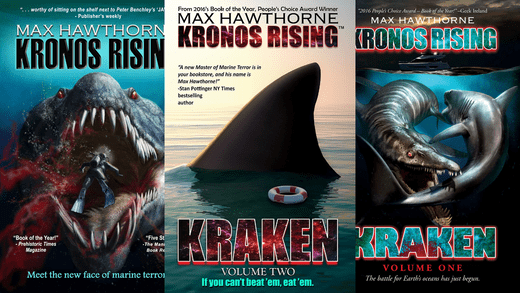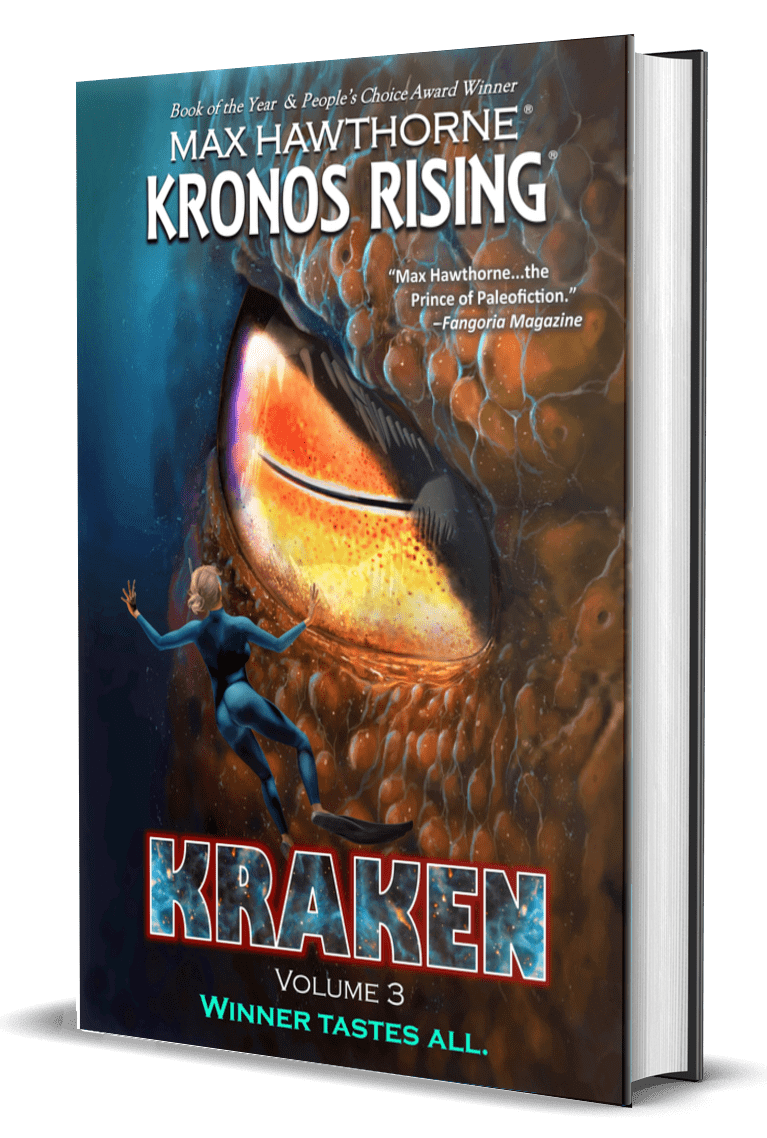In 1918, a group of lobster fishermen,fishing out of Port Stephens, AU, experienced a sighting of what is, conceivably, the largest shark ever recorded. Described as being “ghostly white” in color, and measuring from 115-300 feet in length, this particular historical sighting is, arguably, one of the strongest pieces of anecdotal evidence for the existence of an extant population of the (purportedly) extinct mackerel shark, Carcharocles megalodon. So was Megalodon Spotted ?
The actual sighting, recounted by Australian naturalist David Stead, goes as follows:
“In the year 1918 I recorded the sensation that had been caused among the “outside” crayfish men at Port Stephens, when, for several days, they refused to go to sea to their regular fishing grounds in the vicinity of Broughton Island. The men had been at work on the fishing grounds, which lie in deep water, when an immense shark of almost unbelievable proportions put in an appearance, lifting pot after pot containing many crayfishes, and taking, as the men said, “pots, mooring lines and all”. These crayfish pots, it should be mentioned, were about 3 feet 6 inches [1.06 m] in diameter and frequently contained from two to three dozen good-sized crayfish each weighing several pounds. The men were all unanimous that this shark was something the like of which they had never dreamed of. In company with the local Fisheries Inspector I questioned many of the men very closely and they all agreed as to the gigantic stature of the beast. But the lengths they gave were, on the whole, absurd. I mention them, however, as an indication of the state of mind which this unusual giant had thrown them into. And bear in mind that these were men who were used to the sea and all sorts of weather, and all sorts of sharks as well. One of the crew said the shark was “three hundred feet [90 m] long at least”! Others said it was as long as the wharf on which we stood, about 115 feet [35 m]! They affirmed that the water “boiled” over a large space when the fish swam past. They were all familiar with whales, which they had often seen passing at sea, but this was a vast shark. They had seen its terrible head which was “at least as long as the roof on the wharf shed at Nelson Bay.” Impossible, of course! But these were prosaic and rather stolid men, not given to ‘fish stories’ nor even to talking about their catches. Further, they knew that the person they were talking to (myself) had heard all the fish stories years before! One of the things that impressed me was that they all agreed as to the ghostly whitish colour of the vast fish. The local Fisheries Inspector of the time, Mr. Paton, agreed with me that it must have been something really gigantic to put these experienced men into such a state of fear and panic.”
Obviously, a shark measuring 300 feet in length is preposterous; but in the grip of fear, and maybe a few beers, unknown creatures can easily grow within the confines of one’s imagination. Was there a shark? Undoubtedly. Was it 200’ long, or even 100? Doubtful. But it may have been 60 feet long or even longer. The main question is, was it a Megalodon spotted ?
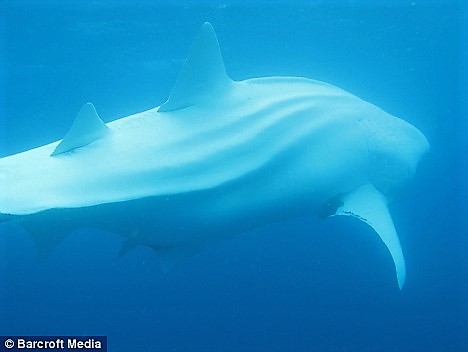
My Theory On The Megalodon Spotted
Recently, I participated in a Blog Talk Radio show with cryptozoologists Adam Davies, Scott Mardis, and Julie Rench, wherein we discussed whether the Megalodon still alive be alive today. Megalodon – Super Predator In the weeks prior, while prepping for the show, and with the Port Stephens sighting slated to come up for discussion as one of the historical sightings, I presented my theory that the shark sighted that day wasn’t a Megalodon spotted at all. This was brought up as part of the discussion, and, as promised, I’m now exploring the theory in detail. Based on my research, the 1918 sighting was not only not a Megalodon, it wasn’t a predatory shark at all.
It was a giant whale shark.
If you look at the details of the story, it becomes apparent. Firstly, the shark sighted was enormous. We know that whale sharks grow to huge sizes, possibly approaching 60 feet, and there are unsubstantiated reports of them reaching 75 feet or longer. Whale Shark Size
Perhaps the largest reported whale shark sighting was told to me by my old shark captain, Phil Lewis, who ran a boat named the Adios out of Montauk, NY. Phil was an amazing shark fisherman, and one of the most stolid individuals I’ve ever known. He recounted many spectacular marine sightings to me, including once watching three adult great whites working together to try and corral a pod of speedy bluefin tuna.
His most spectacular story, however, was one where a whale shark, which he claimed was every bit of 90 feet in length, came up behind the Adios as they were sitting in a chum slick, and tried mouthing the stern. When the behemoth persisted, he became worried that it might damage his beloved boat, and he finally cranked up the diesels and abandoned their slick.
I initially scoffed at this, but Phil told me, calmly (and a bit sternly) that he was dead serious.
He said, “Max, I’ve been doing this for 70 years. The shark was right behind the transom, ten feet from where you’re standing, and its head was every bit as wide as the beam of this boat. That’s 17 feet.” I scratched my head, still not convinced, and made jokes about the shark perhaps thinking the Adios was a potential mate and trying to get romantic with it. In retrospect, however, and having seen videos of whale sharks sucking small fish out of trawler’s nets, it makes sense.
The shark might well have followed the oily chum slick the shark boat was putting out (usually frozen fish parts, blood and oil, oozing through holes in a perforated barrel as it thaws) and was looking for an easy meal. 90 feet? Seems unlikely. But when I measured a head 17’ wide against a whale shark’s LOA, it comes up pretty accurate. So, who knows? Maybe there was, or even is, a whale shark that size out there.
So, size-wise, we know a whale shark is a good potential candidate. Now, let’s discuss the feeding behavior observed. The Port Stephens shark reportedly grabbed crayfish (lobster) pots, 3.5’ across and engulfed them, one by one. Each one contained many lobsters. Does this sound like a macropredatory shark? Would a great white eat a lobster pot? I doubt it. True, sharks are known to mouth things to see if they’re edible, and are attracted at times to metal objects (boat props, for example).
But an exploratory bite usually determines what is edible and what is not. I can’t picture any carnivorous shark scarfing down unpalatable lobster pots – whether they’ve got crustaceans in them or not. I can, however, picture a whale shark doing that. Firstly, whale sharks eat krill, and krill are tiny crustaceans. I would imagine a lobster and krill taste and smell quite similar, and it wouldn’t surprise me that a hungry whale shark, with a mouthful of caged lobsters, would ingest the cage too, possibly mashing it up and spitting it out underwater, and then keeping and ingesting the crushed crustaceans, whose fragmented bodies would easily slip through (or be suctioned out of) the mangled wire frames. This type of underwater feeding would certainly appear alarming, and the fishermen would have no idea that their destroyed cages ended up on the bottom, right under their boats. It’s not like they’d dive in to go see…
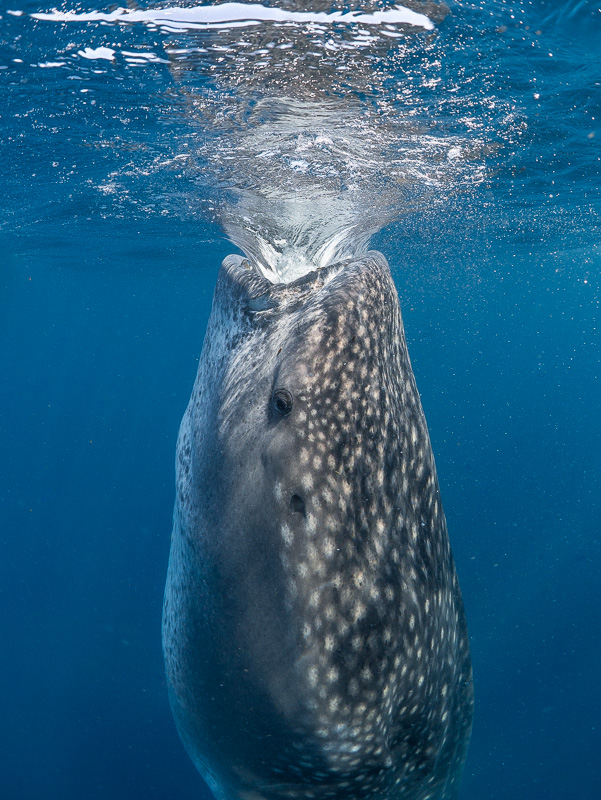
Lastly, there is the issue of color. The Port Stephens’ shark was purportedly a ghostly white in color. Are there white whale sharks? They’re rare, but, in fact, they exist. I should think a 60-90-foot whale shark, with pale skin, and sucking down lobster pot after lobster pot, while the owners watched, helplessly, would make for an astonishing, even terrifying sight. With its unusual color, they probably never made the connection that it was a harmless whale shark – if they were even familiar with the species. All they may have seen was a gigantic monster, with a head the size of the back of their boat, and an 8-foot fin sticking out of the water, as it devoured their gear.
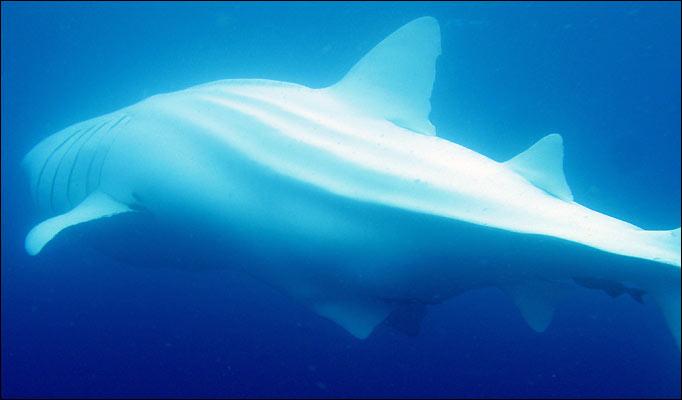
In summary, I think we can safely dismiss the 1918 account as having been what it undoubtedly was – a hungry, albino Rhincodon typus, not a Megalodon spotted, doing what all sharks do – being an opportunistic feeder. Does this mean that Megalodon does not still exist? As I said during the podcast, no. In fact, if it doesn’t still exist, then something else with a huge bite radius is still out there, taking bites out of whales and whale sharks alike. Some scientists have publicly stated that it is not Megalodon, but rather an enormous sub-species of great white that reaches lengths of 35-40 feet. But that, I’ll address on a future post. Before signing off, I’d be remiss if I didn’t let readers know that my new novel, Kronos Rising: Kraken (volume 2) has been released. Be sure to check it out on Amazon: https://www.amazon.com/KRONOS-RISING-KRAKEN-cant-beat-ebook/dp/B07DJZ84VH/ref=cm_cr_arp_d_product_top?ie=UTF8
Last not least, my first novel, Kronos Rising, is available for a limited time for FREE Kindle reads through Amazon’s Kindle Unlimited program, and for Amazon Prime members (standard rules apply). Check it out at: Read KRONOS RISING on Kindle for FREE
Thanks so much, and stay hungry, my fans.
Max Hawthorne

